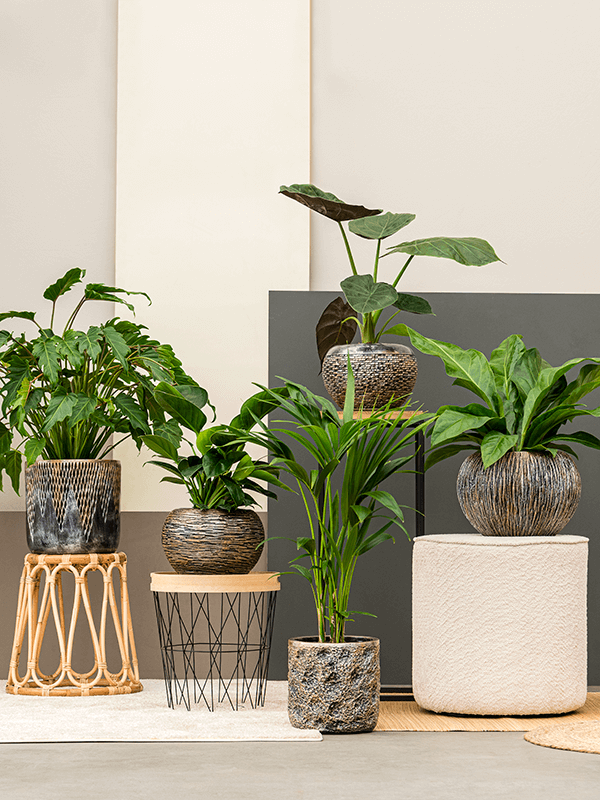how to care for senecio rowleyanus ‘string of pearls’

quick care guide for senecio
 |
Every 2-3 weeks in summer; once a month in winter |
 |
Does best in bright direct and indirect light |
 |
Fertilize once a month during growing season |
 |
Toxic to pets |
 |
Doesn’t do much in terms of air purification |
A beautiful creeping succulent, the string of pearls is an interesting houseplant that grows fast and propagates easily. A drought tolerant plant which enjoys bright light, including sunlight and temperatures around 22ºC throughout its active growth.
detailed care guide for senecio rowleyanus ‘string of pearls’
Scientific Name: Senecio Rowleyanus, commonly known as string of pearls or string of beads
Origin: South Africa
Light: Bright spots (6-8 hours of bright) with indirect sunlight.
Water: Sensitive to overwatering. Recommended amount is once in a month in winter and every 2-3 weeks in the summer
Soil: Require sandy, well-draining soil
Temperature: Warm temperatures – average indoor temperatures of 21ºC – 27ºC.
Fertilizer: Does not require a lot of fertilizer. During growth time, fertilize once every 2 to 4 weeks in spring and mid-summer. Do not fertilize during fall and winter.
Humidity: Low humidity is preferred
Pruning: Prune occasionally – trim off any dead stems or pearls or parts that have grown leggy. Maintain its size and freshen it back up.
Re-Potting: Doesn’t need frequent repotting. Repot as soon as the plant grows out of its pot, doesn’t grow as well as it used to, or once it becomes rootbound. Recommended at the beginning of spring.
Propagation: Easy propagation through cuttings or division of the pups or offsets.
Diseases and Pests: Susceptible to aphids or mealybugs. Risk of root rot if the soil is not well-drained.
Toxicity: Toxic for both humans and pets
most common senecio varieties
senecio herreanus

senecio peregrinus

senecio rowleyanus

senecio rowleyanus origins & overview
Senecio rowleyanus is an atypical-looking succulent due to its nearly spherical leaves originating from the dry areas of South Africa. Its name derives from the British botanist Gordon Rowley and it is part of the huge genus Senecio. It was recently moved into the new genus Curio, but it’s still identified as Senecio Rowleyanus.
A tender evergreen perennial in the daisy family, the plant grows from thin surface roots, producing trailing stems as long as 90 cm.
It is typically grown as a houseplant or an outdoor ornamental. Hanging baskets are perfect for the string of pearls as it allows the trailing stems to beautifully spill downward.
As a succulent, this plant is relatively low maintenance and it only requires bright light, well-drained soil and infrequent watering.
senecio rowleyanus light requirements
String of Pearls plants have to be placed in bright environments filled by indirect sunlight when growing them indoor. For outdoors, partially shaded spots are beneficial for them.
If you decide to grow your String of Pearls indoor it is important to position the plant in places where it can have access to strong natural light or plenty of light and indirect sunshine. They need to get at least 6 to 8 hours of bright, indirect sunshine daily. For hot areas carefully prevent it from getting sunburnt.
If you prefer growing it outdoor, protect it from direct sunlight. They don’t do well under intense heat and full sun, but they prefer a bright location protected from direct sunlight. Proper shade for the plant is crucial when growing them outside and hanging them around taller plants may be a good idea for this. Make sure that your senecio doesn’t suffer from the cold – bring it inside if temperatures drop under 18ºC at night.
how to water the senecio rowleyanus
String of Pearls can survive long periods without water, however they are particularly sensitive to overwatering and will happily rot away when they don’t have the right conditions. For proper watering, check whether the soil is half a centimeter (1.2 cm) dry before watering it the next time and be sure to let the soil dry out every time between waterings. During winter you should cut back watering to only once a month. A good approach to follow when watering your string of pearls is to follow the soak and dry method. Water deeply until it drains from the drainage holes and don’t forget to empty the drained water from the plate. Rainwater or distilled water is great for use. Avoid using tap water because tap water contains treated chemicals that will build up in the soil through time as salts.repotting the senecio rowleyanus
There is no need to repot the succulent regularly since it’s a very delicate plant with shallow root systems. If it’s still growing well in its current vessel it doesn’t need repotting. Once the string of pearls is growing out of the pot, it has become rootbound or it doesn’t grow as well as before, repotting into a bigger pot becomes necessary. The suitable time period for repotting is at the beginning of the growing season (spring).
frequently asked questions for senecio
why is the top of my string of pearls drying out?
Crispy leaf edges on your string of pearls are of the signs your plant is drying out. This is mainly due to not enough light on top of the pot.
Solution: Take a couple of strands of your plant and place them down on top of the soil by using garden pins. Within a few weeks new roots should appear into the soil and your pot will be full and green again! Try to place the plant in good lighting to prevent this from happening again and make sure it gets at least 4 – 6 hours of light every day
why is my string of pearls sticky?
If you suddenly feel your string of pearls sticky you don’t need to worry. This is how the plant makes sure it sticks to surfaces and doesn’t get easily broken by wind or other potential threats.
Nevertheless, do not neglect the stickiness as it may be a sign of pest infestation. Check the plant thoroughly before taking action.
Solution. Check for mealy bugs or other type of insect that may cause the stickiness. If you observe any problems, remove from other plants and use neem oil to treat it.
why is my string of pearls shriveling?
The main cause of shriveled leaves in String of Pearls is watering issues. They store water in their round leaves and once their water storage runs low, these round beads begin to shrivel. While too little water is the most common reason for shriveled leaves, too much water can also cause leaves to shrivel which can add to the confusion when caring for these plants.
To determine whether the cause is underwatering or overwatering you need to analyze your watering schedule. They are clearly being underwatered if you water once a month or less. However, if you have been watering your plant regularly and you notice the leaves are beginning to shrivel it is probably due to overwatering.
Solution. In the case of underwatering, increase the frequency of watering to once every two weeks and monitor carefully. However, if you suspect overwatering your plant cut down on the watering once every two weeks or less.
